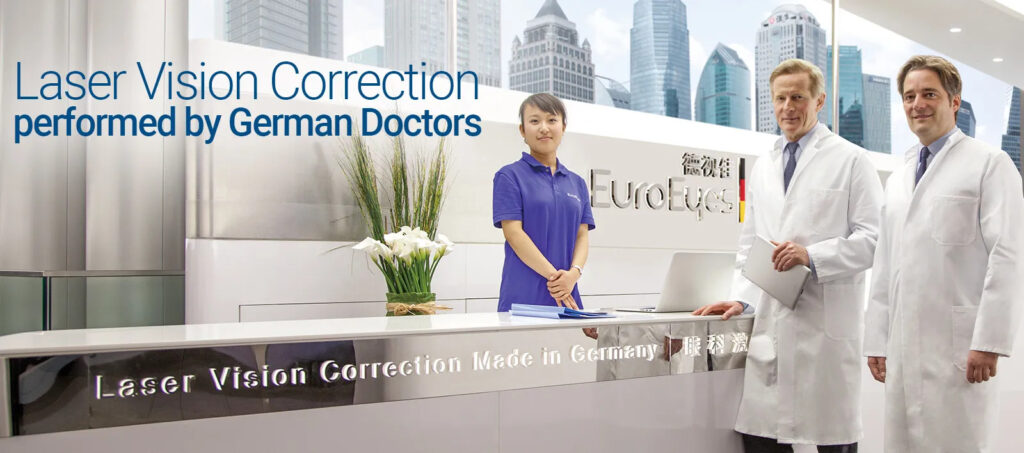Advances in Glaucoma Eye-drop Technology
Glaucoma – a word that may sound familiar, yet its true impact on vision and overall eye health is often underestimated. Imagine looking through a foggy window where the world becomes blurry and hazy. This is just a glimpse of what individuals with glaucoma experience on a daily basis. But fear not, my fellow readers! In this era of advanced medical technology, there’s hope shining brightly in the form of innovative eye-drop treatments for glaucoma. So sit back, relax, and let’s dive into the fascinating world of glaucoma eye-drop technology together!
What is Glaucoma and How Does it Affect Vision?
Glaucoma is a group of eye conditions that can cause damage to the optic nerve, which connects the eye to the brain. It is often associated with increased pressure inside the eye, known as intraocular pressure (IOP). This elevated pressure gradually damages the optic nerve fibers, leading to vision loss if left untreated.
The impact of glaucoma on vision varies depending on the type and stage of the condition. In its early stages, glaucoma may not produce noticeable symptoms or visual changes. However, as it progresses, individuals may experience peripheral vision loss or tunnel vision. Imagine trying to navigate through life with only a small window of clear sight and everything else obscured by darkness.
What makes glaucoma particularly tricky is that it usually develops slowly and painlessly over time. By the time symptoms become evident or vision loss occurs, irreversible damage may have already taken place. That’s why regular eye exams are crucial for early detection and intervention.
It’s important to note that not all cases of glaucoma are solely caused by high IOP; other factors such as genetics, age, ethnicity, and underlying medical conditions can also contribute to its development. Therefore, understanding your risk factors and seeking regular check-ups with an ophthalmologist are essential steps in maintaining good ocular health.
So now that we have a better grasp on what glaucoma is and how it affects our precious sense of sight let’s explore some traditional treatment methods for this condition! Stay tuned!
Traditional Treatment Methods for Glaucoma
Traditional Treatment Methods for Glaucoma
When it comes to managing glaucoma, there are several traditional treatment methods that have been used over the years. These treatments aim to reduce eye pressure and prevent further damage to the optic nerve.
One common approach is the use of prescription eye drops. These medications work by either increasing the drainage of fluid from the eye or reducing its production. They are typically applied once or twice a day, depending on your doctor’s recommendation.
Another method is oral medication which can be prescribed alongside eye drops. The oral medication helps in lowering intraocular pressure by reducing fluid production in the eyes.
Surgical interventions may also be considered for patients with advanced glaucoma. Procedures such as trabeculectomy, laser trabeculoplasty, and drainage tube implantation can help improve drainage and relieve pressure on the optic nerve.
Regular monitoring and follow-up visits with an ophthalmologist are crucial when using these traditional treatment methods for glaucoma management. It’s essential to work closely with your healthcare provider to find the most effective treatment plan for your specific condition.
Remember, early detection and timely intervention play a vital role in preserving vision and preventing irreversible damage caused by this sight-threatening disease.
Introduction of Eye-drop Technology for Glaucoma
Glaucoma is a chronic eye condition that affects millions of people worldwide. Traditionally, the mainstay of treatment for glaucoma has been oral medications and surgical procedures. However, in recent years, there have been significant advancements in the field with the introduction of eye-drop technology for glaucoma.
Eye-drop technology offers a more convenient and non-invasive approach to managing this condition. These specialized eye drops are designed to lower intraocular pressure (IOP), which is the primary cause of optic nerve damage in glaucoma patients. By reducing IOP, these drops help slow down or prevent further vision loss associated with the disease.
One major benefit of using eye drops for glaucoma is their ease of use. Unlike other treatment methods such as oral medications or surgery, these drops can be self-administered by patients at home without any assistance. This makes them highly accessible and user-friendly for individuals with varying degrees of mobility or visual impairment.
There are several different types of glaucoma eye drops available on the market today. Prostaglandin analogs are commonly prescribed as first-line therapy due to their effectiveness in lowering IOP. Beta blockers, alpha agonists, carbonic anhydrase inhibitors, and rho kinase inhibitors are also used depending on each patient’s specific needs.
While generally safe and well-tolerated by most patients, it is important to note that glaucoma eye drops may have potential side effects and precautions associated with them. Some common side effects include stinging or burning sensations upon application, redness or irritation of the eyes, blurred vision temporarily after administration among others.
Researchers and scientists continue to explore new innovations in glaucoma treatment utilizing eye-drop technology. Nanotechnology-based delivery systems show promise in improving drug absorption within the eyes while minimizing systemic side effects.
In conclusion,
the introduction
of eye-drop technology
has revolutionized
the way we manage
glaucoma.
These drops offer
convenience,
effectiveness, and accessibility
in the
Benefits of Eye-drop Technology
Benefits of Eye-drop Technology
Eye-drop technology has revolutionized the treatment options available for patients with glaucoma. One of the key benefits of using eye drops to manage this condition is their convenience and ease of use. Unlike other treatment methods such as oral medications or surgical procedures, eye drops can be easily administered by the patient themselves at home.
Another advantage is that eye drops are non-invasive, meaning they do not require any injections or incisions. This makes them a more comfortable option for individuals who may be apprehensive about undergoing surgery or taking pills on a regular basis.
Additionally, eye drops provide targeted delivery of medication directly to the affected area, which helps to minimize potential side effects on other parts of the body. By delivering medication directly to the eyes, it ensures that an adequate amount reaches the target tissues.
Furthermore, advances in eye-drop technology have led to improved formulations that enhance drug absorption and prolong drug release within the eyes. This means that patients can benefit from longer-lasting effects with fewer applications throughout the day.
Moreover, many glaucoma eye drops now come in preservative-free formulations, reducing the risk of irritation and allergic reactions for those with sensitive eyes. These advancements have made it easier for patients to adhere to their prescribed treatment regimen without experiencing unnecessary discomfort.
Utilizing eye-drop technology for glaucoma provides numerous advantages including convenience, non-invasiveness, targeted delivery, improved formulations for extended effect duration and reduced irritations through preservative-free options. It’s clear that this innovative approach has transformed how glaucoma is managed and offers hope for better outcomes in vision preservation.
Different Types of Glaucoma Eye-drops
Different Types of Glaucoma Eye-drops
When it comes to managing glaucoma, eye-drop medications have become a crucial part of treatment plans. These specialized drops work by reducing intraocular pressure (IOP) and protecting the optic nerve from further damage. With advancements in technology, there are now several different types of glaucoma eye-drops available.
One common type is prostaglandin analogs, which help increase the outflow of fluid from the eyes, thereby reducing IOP. These drops are typically used once a day and have shown significant effectiveness in lowering pressure levels.
Another type is beta blockers, which work by decreasing the production of aqueous humor in the eyes. By doing so, they help reduce IOP and prevent further vision loss for individuals with glaucoma.
Carbonic anhydrase inhibitors are yet another option. They decrease fluid production while also increasing its drainage from the eyes. These drops can be used alone or in combination with other medications to effectively manage glaucoma symptoms.
Alpha agonists are another class of eye-drops that lower IOP by both decreasing fluid production and increasing its outflow through different mechanisms. They can be particularly beneficial for individuals who require additional help in controlling their IOP levels.
It’s important to note that different individuals may respond differently to these medications due to variations in their condition or medical history. Therefore, it’s essential to consult with your ophthalmologist before starting any new medication regimen.
With various types of glaucoma eye-drops available today, patients have more options than ever before when creating a personalized treatment plan tailored specifically to their needs and condition severity.
Potential Side Effects and Precautions
Potential Side Effects and Precautions
While glaucoma eye-drop technology has revolutionized the treatment of this condition, it’s important to be aware of potential side effects and take necessary precautions. Like any medication, glaucoma eye-drops can have their own set of risks.
One common side effect is eye irritation or redness upon application. This typically subsides after a short period, but if the discomfort persists or worsens, it’s essential to consult with your ophthalmologist. Another potential side effect is blurred vision temporarily after instilling the drops. This should also improve within a few minutes.
In some cases, individuals may experience allergic reactions to certain components in the eye-drop solution. Symptoms can include itching, swelling, or a rash around the eyes. If you notice any signs of an allergic reaction after using glaucoma eye-drops, discontinue use immediately and seek medical attention.
It’s crucial to follow dosage instructions precisely and not exceed recommended usage frequency. Using more drops than prescribed will not provide additional benefits but could increase your risk of experiencing adverse effects.
Additionally, inform your doctor about any other medications you are currently taking since certain drugs may interact with glaucoma eye-drops. They will assess whether there are any potential contraindications or adjustments needed for optimal treatment outcomes.
Remember that individual responses to glaucoma eye-drops can vary greatly; what works well for one person might not work as effectively for another due to differences in physiology and underlying health conditions.
While glaucoma eye-drop technology offers numerous advantages in managing this sight-threatening disease effectively, understanding potential side effects and taking precautions is vital for safe and successful treatment outcomes.
Future Innovations in Glaucoma Treatment
Future Innovations in Glaucoma Treatment
1. Gene Therapy: One promising area of research is gene therapy, which involves introducing specific genes into the cells of the eye to correct any genetic abnormalities associated with glaucoma. This approach could potentially halt or even reverse the progression of the disease.
2. Neuroprotective Agents: Scientists are also investigating neuroprotective agents that can protect and preserve the optic nerve from damage caused by glaucoma. These agents work by preventing cell death and promoting nerve regeneration, ultimately preserving vision.
3. Nanotechnology: Nanotechnology offers exciting possibilities for targeted drug delivery to treat glaucoma more effectively. Researchers are developing nanoparticles that can carry medications directly to the affected tissues in a controlled manner, improving treatment outcomes while minimizing side effects.
4. Stem Cell Therapy: Stem cell therapy holds great promise for regenerating damaged optic nerves and replacing lost retinal ganglion cells in patients with glaucoma. By harnessing the regenerative potential of stem cells, this cutting-edge approach may offer a long-term solution for restoring vision loss caused by glaucoma.
5.
Improved Imaging Techniques: Advancements in imaging technology are revolutionizing early detection and monitoring of glaucoma progression. High-resolution imaging techniques such as optical coherence tomography (OCT) provide detailed insights into structural changes within the eye, enabling earlier intervention and personalized treatment plans.
6.
Artificial Intelligence (AI): AI algorithms have shown potential in analyzing large amounts of data generated from diagnostic tests to predict disease progression accurately.
Also assist ophthalmologists In diagnosing Gluacoma using machine learning models trained on vast datasets
The future outlook for treating glaucoma looks promising.
With ongoing advancements across various fields like genetics,nanotechnology,and stem cell therapy,the goal is not only managing symptoms but also halting or reversing its progress.
We eagerly await these innovations as they hold tremendous potential to transform lives affected by this sight-threatening condition
Conclusion
Conclusion
Advancements in glaucoma eye-drop technology have revolutionized the treatment options available for this sight-threatening condition. These innovative solutions offer a more convenient and effective way to manage glaucoma and preserve vision.
From traditional treatment methods that involved surgery or oral medications, we have now shifted towards the use of specialized eye drops specifically designed to target the underlying causes of glaucoma. These eye drops work by reducing intraocular pressure and minimizing damage to the optic nerve.
The benefits of using glaucoma eye drops are numerous. They provide localized treatment directly to the affected area, allowing for targeted therapy with minimal systemic side effects. Additionally, their ease of use makes them a preferred option for patients as they can be conveniently self-administered at home.
There are different types of glaucoma eye drops available, including prostaglandin analogs, beta-blockers, alpha-adrenergic agonists, carbonic anhydrase inhibitors, and rho kinase inhibitors. Each type has its own mechanism of action and is prescribed based on individual patient needs.
It’s important to note that while these eye drops offer significant advantages in managing glaucoma symptoms and preventing further vision loss if used as directed by your healthcare provider; it is crucial to follow guidelines regarding dosage frequency and potential side effects.
Although rare, some individuals may experience side effects such as irritation or allergic reactions when using these medications. It is essential to inform your doctor immediately if you experience any adverse effects after starting a new medication regimen.
Looking ahead into the future of glaucoma treatment, ongoing research aims to develop even more advanced technologies such as sustained-release implants or gene therapies that could provide longer-lasting relief from elevated intraocular pressure or potentially halt disease progression altogether.
As our understanding of this complex condition continues to expand, we can expect further innovations in detecting early signs of glaucoma through improved diagnostic techniques. This will allow for earlier intervention and more targeted treatment strategies, ultimately helping to preserve vision and enhance the quality of life



